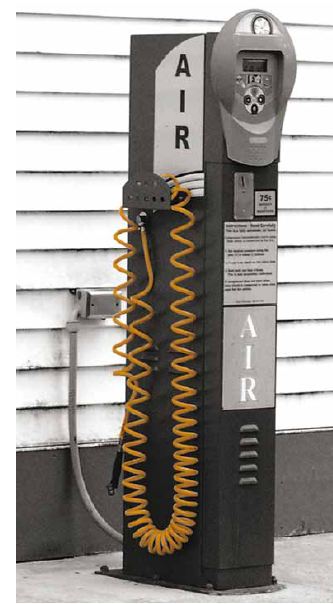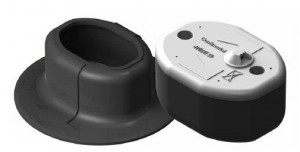 Continental unveiled its new ContiPressureCheck system at Mid-America Trucking Show.
Continental unveiled its new ContiPressureCheck system at Mid-America Trucking Show.
Underinflation, the enemy of commercial truck tyres, has been estimated by the Technology and Maintenance Council to cause nine out of 10 tyre failures as well as faster tyre wear and reduced fuel economy, reports Clif Armstrong, the tyre maker’s marketing director.
ContiPressureCheck is an advanced tyre pressure monitoring system (TPMS) specially designed for commercial vehicles. The system constantly monitors the pressure and temperature of each tyre on the vehicle in order to provide real-time, on-demand tyre status information and to warn the driver of tyre-related problems before they become a critical concern, according to Armstrong.
He goes on to note that it “is a unique product that brings together all Continental’s expertise in tyres, inflation, in-cab displays, sensors and monitoring technologies for a direct system that not only provides advanced, accurate pressure data, but also addresses fleet concerns about fuel economy and operating cost reductions.”
The system integrates its sensors, communication system and data processor into a single module that is housed inside a rubber container and glued to the inner surface of the tyre.
The sensors continuously monitor both air pressure and the tyre temperature and send the data wirelessly to the truck’s electronic control unit (ECU). “This processes the data, saves warnings and sends them directly to a display in the driver’s cab. The driver can immediately take corrective action and avoid a breakdown before it happens,” he explains.
The system has two major advantages for commercial truck drivers over other systems, says Armstrong. “First, it is the only system on the market to account for the tyre’s temperature at its most optimal point inside the tyre, which eliminates interference from other outside elements. The system then compensates for the temperature in the inflation data.”
“Since a tyre’s contained air pressure naturally increases as a vehicle moves, it is difficult to tell if a hot tyre is underinflated. Without some form of temperature compensation, a hot tyre that is underinflated might appear to be fine, because the contained air pressure is at or above its cold inflation pressure.”
He says: “With ContiPressureCheck, which is tyre mounted, we measure both tyre pressure and temperature, in order to give the most accurate reading. This feature alerts drivers to underinflation issues even in the case of slow leaks, which are difficult to detect in a system that is not compensated. ContiPressureCheck’s construction takes into account years of research into tyre pressure monitoring systems, and provides a robust and reliable system – the second advantage of the product”.
 Because the ContiPressureCheck system sensors are placed inside the tyre, they are less prone to breakage or accidental damage. This construction also avoids measurement errors due to brake heating. The system can be easily installed when tyres are replaced or even before the new vehicle is delivered from the manufacturer.
Because the ContiPressureCheck system sensors are placed inside the tyre, they are less prone to breakage or accidental damage. This construction also avoids measurement errors due to brake heating. The system can be easily installed when tyres are replaced or even before the new vehicle is delivered from the manufacturer.
Armstrong further says the benefits extend well beyond the longevity of the system and the accuracy of its data. Looking at all the factors that impact a commercial fleet’s costs, it addresses several issues that impact fleet operations.
“First is fuel economy. As fuel costs increase, it becomes more and more vital for fleets to manage every drop of diesel. The U.S. Department of Transportation recently reported that in a two-year test, use of a tyre pressure monitoring system decreased fuel consumption by 1.4 per cent. That alone can pay for the cost of a tyre pressure monitoring system, and also reduces emissions. The benefits don’t stop there. Proper tyre inflation also reduces tyre wear and the incidence of breakdowns. All of these factors help keep trucks operating longer and more continuously on the road, and thus reducing operating costs for fleets,” he adds.